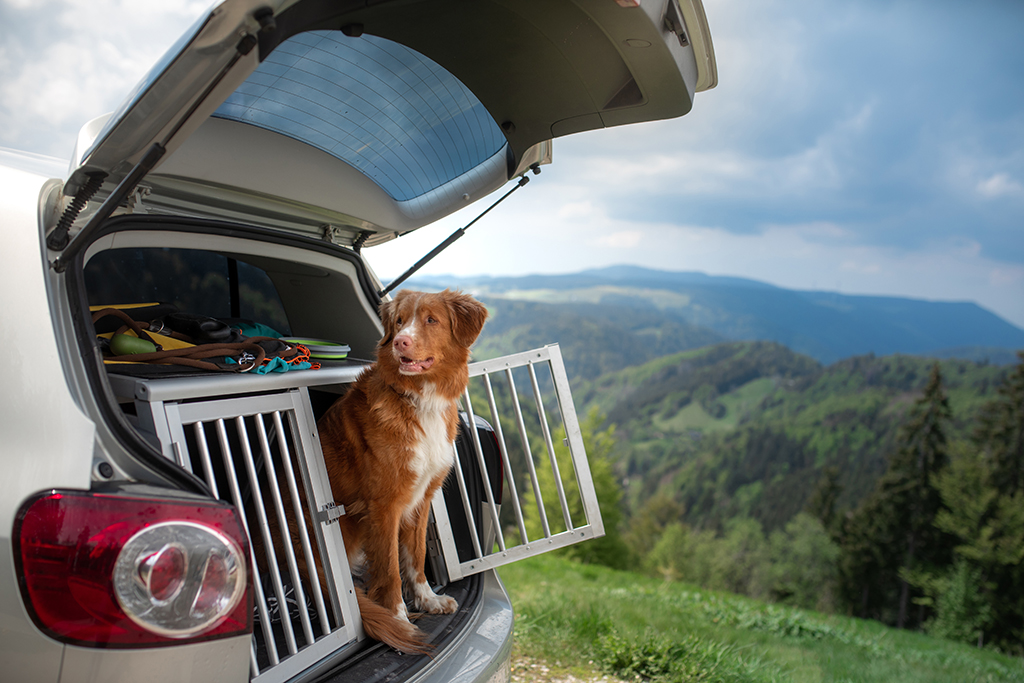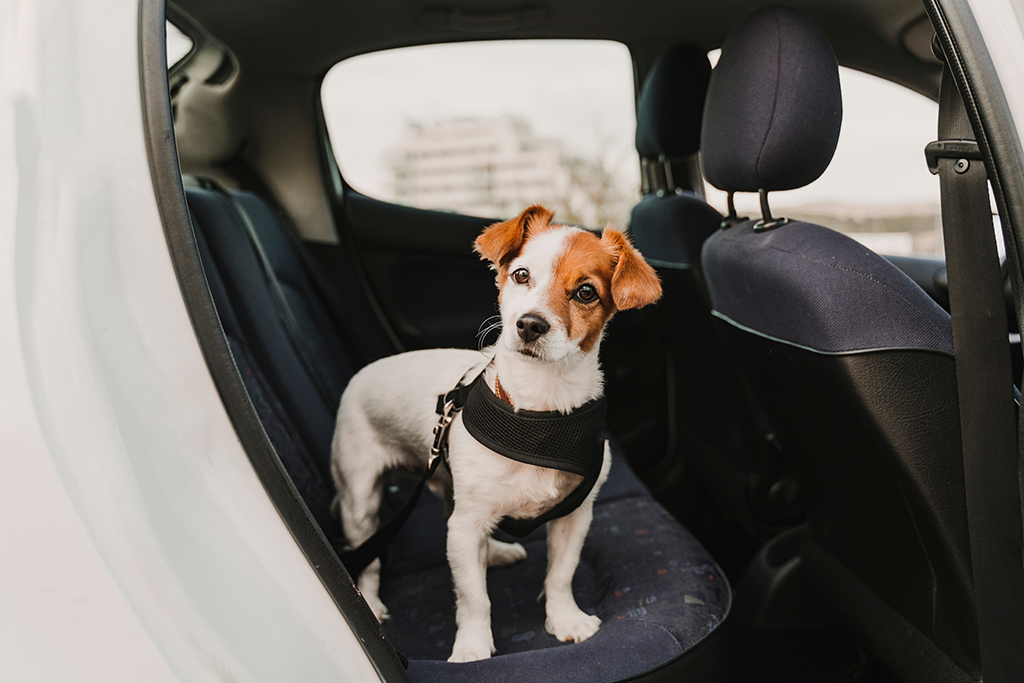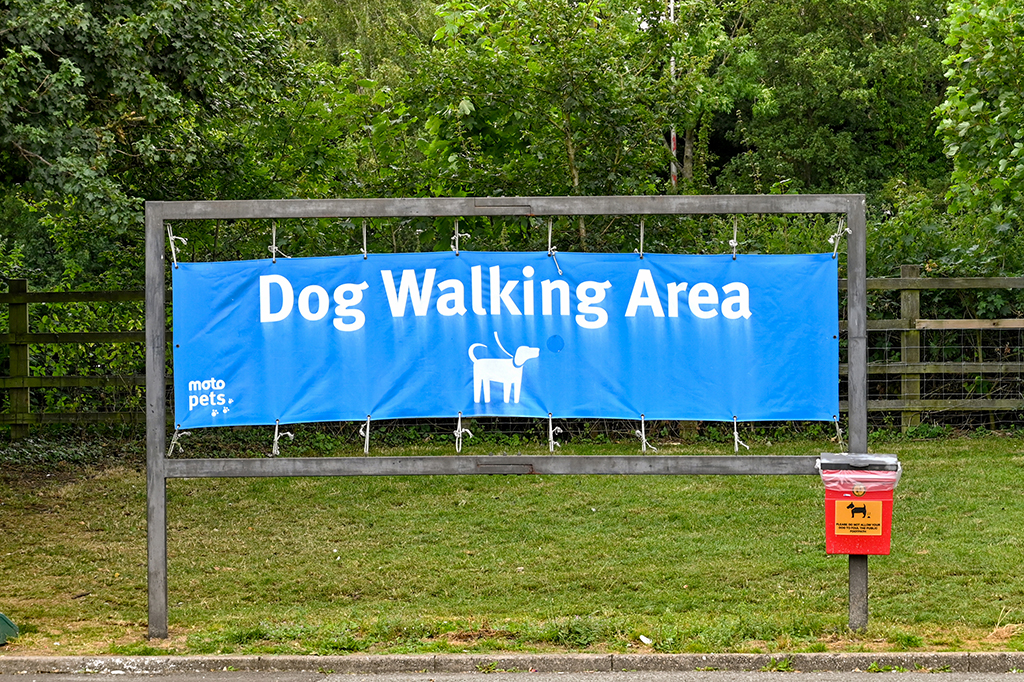
At some point you will likely travel somewhere with your dog whether that’s to the vet or perhaps the beach for a coastal walk. However, ahead of travelling with a furry companion it’s important to be aware of what rules apply to you as a both a car and pet owner.
Rule 57 of the Highway Code states: ‘When in a vehicle make sure dogs or other animals are suitably restrained so they cannot distract you while you are driving or injure you, or themselves, if you stop quickly. A seat belt harness, pet carrier, dog cage or dog guard are ways of restraining animals in cars.’
How to Secure Your Dog in the Car

With several options available, choosing a suitable way to restrain your dog(s) when travelling in the car will depend on what suits you and your pet’s needs best.
- Dog Crate – if you’ve crate trained your dog and you have the space then this is a great way to safely secure your pup while driving as they’ll be more than familiar with the environment. Depending on the size of the crate you could fasten it into the back seat, alternatively secure it in the boot of the car. Placing their favourite blanket in the crate could also help keep them calm and settled during the journey.
- Seat Belt Harness – is considered the best and safest way for a dog to travel in a car. You fit the harness onto your pet and that is then attached to your car’s integrated seatbelt system – ensuring there’s enough slack for your pooch to get comfy but not too much so that it can’t roam around the car. If you decide to use a harness on the front-passenger side of your vehicle, you’ll want to ensure the passenger side airbag is switched off and the seat is pushed back as far as possible.
- Pet Carrier – similar to a crate, a small pet carrier is another safe and secure way to transport your doggy companion. A pet carrier could either be placed behind the front seats in the rear footwell or secured in place using the car’s seatbelt. These are ideal if you’ve got a lot of other items to transport, perhaps if planning on staying away from home.
- Dog Guard – fitted to the boot between the rear backseats to prevent your dog(s) from jumping through to the front of the car a dog guard is ideal for dogs who prefer to sit in the boot of the car. However, for added safety and in case of an accident it’s still necessary to secure your dog while travelling either with a harness or in a crate.
Remember, accidents can happen to even the most cautious of drivers, therefore, having your dog safely restrained can help protect them, as well as you and any other persons in your car should the unexpected happen.
Pet Travel Tips When Travelling in a Car

Ensuring your pets are safely secure while travelling aren’t the only considerations for pet owners. Here are some further do’s and don’ts to consider when travelling with dogs in the car.
DO
- Factor in places you can stop, when making long-distance journeys, to allow you and your dog(s) to stretch your legs, go to the toilet and rehydrate.
- Open the window a touch if it’s warm to help circulate the air in the car to keep your pooch cool, alternatively put the air conditioning on.
- Put on the heating and bring extra blanks to keep your pooches warm when it’s cold.
- Take extra care when breaking or making manoeuvres, especially if you’re transporting a more elderly dog or one that is injured as they may find it more difficult to steady themselves.
- Consider taking some of your dog’s food and extra water should your car breakdown.
DON’T
- Feed them before travelling as they could become car sick. Instead, offer them food two hours prior to leaving to allow their tummy to settle before going on your journey.
- Let them hang their head out of the window. There’s always the risk they could get injured by an oncoming vehicle or object which could seriously injure them. Having the window open too wide could also result in your dog jumping out of the window which again, could have serious consequences.
- Leave your dogs in the car unattended, especially on a hot day. The temperature inside the car can increase rapidly leaving your dog to become dehydrated, overheated and potentially suffer from heatstroke. The consequences of this could be fatal to your pet. Our guide on dogs overheating in cars will tell you more about the dangers.
Getting your pooch used to travelling in the car could open up a world of opportunities to explore your local surroundings or even to travel further afield. For further tips, take a look at our guide to taking your pet on holiday in the UK.
Remember, accidents and illnesses can happen away from home, therefore pet insurance could give you peace of mind should the worst happen. Here at The Insurance Emporium, we have a range of policies for you to choose from, depending on what suits you and your pet’s needs best. Our paw-some insurance covers Dog Insurance and Senior Dog Insurance – take a look today to find out more.
All content provided on this blog is for informational purposes only. We make no representations as to the accuracy or completeness of any information on this site or found by following any link on this site. We will not be liable for any errors or omissions in this information nor for the availability of this information. We will not be liable for any loss, injury, or damage arising from the display or use of this information. This policy is subject to change at any time.
We offer a variety of cover levels, so please check the policy cover suits your needs before purchasing. For your protection, please ensure you read the Insurance Product Information Document (IPID) and policy wording, for information on policy exclusions and limitations.


